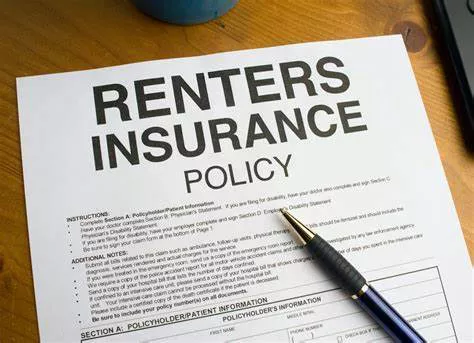Home insurance is a critical component of homeownership, offering protection against a myriad of risks. For residents of California, the unique environment and hazards present specific challenges that make having the right amount of home insurance even more important. This comprehensive guide will help you determine how much home insurance you need in California, ensuring you have adequate coverage for your property and peace of mind.
Understanding Home Insurance Basics
What is Home Insurance?
Home insurance, also known as homeowners insurance, is a policy that protects your home and belongings against damage or loss. It also provides liability coverage if someone is injured on your property.
Why Do You Need Home Insurance in California?
California is prone to natural disasters like earthquakes, wildfires, and floods. Additionally, the state has high property values and a large population, increasing the potential for accidents and claims. Home insurance is essential for safeguarding your investment and financial well-being.
Key Components of Home Insurance
1. Dwelling Coverage
What is Dwelling Coverage?
Dwelling coverage protects the structure of your home, including the walls, roof, and foundation. It covers repairs or rebuilding costs if your home is damaged by covered perils like fire, windstorms, or vandalism.
Determining the Right Amount
Replacement Cost: Ensure your dwelling coverage is based on the replacement cost, not the market value. Replacement cost is the amount needed to rebuild your home with similar materials and quality.
Local Construction Costs: Consider the local construction costs in your area, as rebuilding prices can vary significantly across California.
Home Features: Include any unique features or upgrades in your home when calculating the replacement cost.
2. Other Structures Coverage
What is Other Structures Coverage?
Other structures coverage protects additional structures on your property, such as garages, sheds, fences, and guest houses.
Determining the Right Amount
Percentage of Dwelling Coverage: Other structures coverage is typically 10% of your dwelling coverage. Adjust this amount if you have significant or valuable additional structures.
Evaluate Structures: Assess the value of each structure and ensure your policy covers the full replacement cost.
3. Personal Property Coverage
What is Personal Property Coverage?
Personal property coverage protects your belongings inside your home, such as furniture, electronics, clothing, and appliances. It covers these items if they are damaged or stolen due to covered perils.
Determining the Right Amount
Inventory: Create a home inventory listing all your belongings and their values. This will help you determine the total amount of personal property coverage needed.
Replacement Cost: Opt for replacement cost coverage, which reimburses you for the cost of replacing items with new ones, rather than actual cash value, which accounts for depreciation.
Special Items: Consider additional coverage for high-value items like jewelry, art, and collectibles, as standard policies may have limits on these items.
4. Liability Coverage
What is Liability Coverage?
Liability coverage protects you if someone is injured on your property or if you accidentally cause damage to someone else’s property. It covers legal fees, medical expenses, and settlements or judgments against you.
Determining the Right Amount
Standard Limits: Most policies offer liability coverage starting at $100,000.
Higher Limits: Consider higher limits, such as $300,000 or $500,000, for added protection. If you have significant assets, you may want to consider an umbrella policy for additional liability coverage.
Risk Factors: Evaluate your risk factors, such as having a swimming pool, trampoline, or dog, which can increase the likelihood of liability claims.
5. Additional Living Expenses (ALE) Coverage
What is ALE Coverage?
ALE coverage, also known as loss of use coverage, pays for additional living expenses if your home becomes uninhabitable due to a covered peril. This includes hotel bills, restaurant meals, and other temporary living costs.
Determining the Right Amount
Percentage of Dwelling Coverage: ALE coverage is usually a percentage of your dwelling coverage, often 20% to 30%.
Evaluate Needs: Consider your family’s specific needs and adjust the coverage amount accordingly.
6. Medical Payments Coverage
What is Medical Payments Coverage?
Medical payments coverage pays for medical expenses if someone is injured on your property, regardless of who is at fault. It covers minor injuries and can help prevent lawsuits.
Determining the Right Amount
Standard Limits: Medical payments coverage typically starts at $1,000.
Higher Limits: Consider higher limits based on your risk factors and the likelihood of injuries occurring on your property.
Assessing Your Home Insurance Needs
1. Evaluate Your Home’s Value
Replacement Cost vs. Market Value
Replacement Cost: Focus on the replacement cost, which is the amount needed to rebuild your home with similar materials and quality.
Market Value: The market value includes the land value and can be influenced by the local real estate market. It is not an accurate measure for insurance purposes.
Professional Appraisal
Appraisal Benefits: Consider getting a professional appraisal to accurately determine your home’s replacement cost. This ensures you have sufficient coverage to rebuild your home in case of a total loss.
2. Consider Local Risks
Natural Disasters
Earthquakes: California is prone to earthquakes. Standard home insurance policies do not cover earthquake damage, so consider purchasing a separate earthquake insurance policy.
Wildfires: Wildfires are common in California, especially in high-risk areas. Ensure your policy covers fire damage and consider additional coverage if you live in a high-risk zone.
Floods: Flooding is also a risk in certain areas of California. Standard policies do not cover flood damage, so consider purchasing flood insurance through the National Flood Insurance Program (NFIP) or a private insurer.
3. Evaluate Personal Belongings
Home Inventory
Create an Inventory: List all your belongings and their values to determine the total amount of personal property coverage needed.
Update Regularly: Regularly update your inventory to ensure it reflects any new purchases or changes in value.
High-Value Items
Special Coverage: Consider additional coverage for high-value items like jewelry, art, and collectibles. Standard policies may have limits on these items, so additional coverage ensures they are fully protected.
4. Assess Liability Risks
Potential Hazards
Swimming Pools: Pools can increase the risk of accidents and injuries, necessitating higher liability coverage.
Trampolines: Trampolines also pose a higher risk of injury, so additional liability coverage may be needed.
Pets: Certain pets, particularly dogs, can increase the likelihood of liability claims. Ensure you have adequate liability coverage to protect against potential claims.
Umbrella Policies
Additional Protection: Consider an umbrella policy for additional liability protection. Umbrella policies provide extra coverage beyond the limits of your home insurance policy, offering greater financial security.
see also:What Insurance Companies Cover RVs
Tips for Saving on Home Insurance
1. Compare Quotes
Multiple Providers
Shop Around: Obtain quotes from multiple insurance providers to compare coverage options and prices.
Discounts: Ask about available discounts, such as bundling home and auto insurance, installing security systems, or having a claims-free history.
2. Increase Deductibles
Higher Deductibles
Save on Premiums: Increasing your deductible can lower your premium. Ensure you have enough savings to cover the higher deductible in case of a claim.
3. Improve Home Safety
Safety Measures
Security Systems: Installing security systems, smoke detectors, and fire alarms can reduce the risk of damage and may qualify you for discounts.
Home Maintenance: Regularly maintain your home to prevent potential issues and reduce the likelihood of claims.
4. Bundle Policies
Multiple Policies
Bundling Benefits: Bundling home insurance with other policies, such as auto or life insurance, can result in significant savings.
Single Provider: Using a single provider for multiple policies simplifies management and may offer additional discounts.
Common Mistakes to Avoid
1. Underinsuring Your Home
Replacement Cost
Adequate Coverage: Ensure your dwelling coverage is based on the replacement cost, not the market value, to avoid being underinsured.
Regular Reviews: Regularly review and update your policy to reflect any changes in construction costs or home improvements.
2. Ignoring Additional Coverage Needs
Natural Disasters
Earthquake and Flood Insurance: Standard policies do not cover earthquake or flood damage. Consider purchasing separate policies if you live in high-risk areas.
Wildfire Zones: If you live in a wildfire-prone area, ensure your policy includes adequate fire coverage.
3. Choosing Low Liability Limits
Adequate Protection
Higher Limits: Consider higher liability limits to protect against potential claims and lawsuits. If you have significant assets, an umbrella policy provides additional protection.
4. Not Reviewing Your Policy Regularly
Annual Reviews
Policy Updates: Regularly review your policy to ensure it reflects any changes in your home, belongings, or risk factors.
Life Changes: Major life changes, such as home renovations, new purchases, or changes in household members, may necessitate adjustments to your coverage.
Conclusion
Determining how much home insurance you need in California requires careful consideration of your home’s value, local risks, personal belongings, and liability exposure. By understanding the key components of home insurance and assessing your specific needs, you can ensure you have adequate coverage to protect your home and financial well-being. Regularly reviewing your policy and making necessary adjustments will help maintain the right level of protection. Remember, having the right home insurance provides peace of mind and financial security in the face of unexpected events.





















